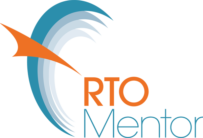As of 1 July 2013, the NSSC required that:
AQTF Element 1.4 and Standards for NVR Registered Training Organisations 2012 of the VET Quality Framework SNR 4.4 / SNR 15.4 Training and assessment are delivered by trainers and assessors who:
a) have the necessary training and assessment competencies determined by the National Quality Council or its successors; and
b) have the relevant vocational competencies at least to the level being delivered or assessed, and
c) can demonstrate current industry skills directly relevant to the training / assessment being undertaken, and
d) continue to develop their Vocational Education and Training (VET) knowledge and skills as well as their industry currency and trainer/ assessor competence.
So many times I have I been asked about trainer and assessor currency, and “what does this really mean in practice?” Here is a summary of my response:
- Firstly review the NSSC website as it does have a clear Q and A section. The specific page can be found here: http://www.nssc.natese.gov.au/policies/determination_for_trainer_and_assessor_competencies
- Trainers and assessors need to hold the TAE40110 – Certificate IV in Training and Assessment as a minimum qualification or be able to demonstrate equivalence of competencies.
- or, they can hold a skill set, as specified, and be working towards completion of their FULL qualification. They have two years to complete this, and they train under supervision.
- Under no circumstances are they permitted to assess under supervision.
- Trainers must also:
- be able to demonstrate vocational competencies at least to the level being delivered and assessed; and
- be able to demonstrate how they are continuing to develop their VET knowledge and skills as well as maintaining their industry currency and trainer/ assessor competence.
Really there are three areas in the above two statements.
- Have the relevant vocational competencies at least to the level being delivered or assessed. This is an area where providers are constantly falling down in audit. The trainers and assessors may have higher qualifications than they are teaching but do not necessarily hold the qualification that they are delivering/assessing. This is commonly the case with a trainer/assessor holding a Bachelor degree for example and maybe teaching an AQF level 3, 4 or Diploma qualification. Whilst it is great that the knowledge is above the level, you still need to prove you have the level you are teaching/assessing. The regulators, in our experience, may request for the provider to map the knowledge and skills to the level being delivered and/or assessed. While there is no requirement under the standards (AQTF or NVR Standards) for this equivalence to be conducted via a mapping exercise, often, in our experience, it is the only way that auditors will accept the evidence. It is also our experience that the mapping needs to be at the unit level, to really demonstrate sufficiency. When the mapping takes place, you may find that there are some gaps in the higher education accomplishment. For example, the trainer and assessor may have completed a Bachelor of Business with an accounting focus and yet the selected units for the qualification being trainer/assessed includes a human resource management stream where the trainer/assessor has no prior educational or industry experience.
- Can demonstrate current industry skills directly relevant to the training/ assessment being undertaken. Currency in this context needs to be determined by your industry. It is not defined in the standards. Current in IT may mean “today” whereas current in HR may mean “12 – 18 months”. The issue of vocational currency can be difficult for RTOs. In Utopia (or an Enterprise RTO) you have the trainer/assessor work for part of the year in the area they are training/assessing. This often, sadly, is not always practical. This issue has been addressed in the policy framework ‘The AVQS: Improving vocational education and training – the case for a new system’. So the RTO needs to find a way that they can demonstrate their vocational currency. AND I once again recommend mapping it to the units.
- Continue to develop their Vocational Education and Training (VET) knowledge and skills as well as their industry currency and trainer/ assessor competence. This area of the NSSC determination requires trainers and assessors to maintain their knowledge and skills both in training and assessment and their vocational knowledge and skills. It is about an ongoing requirement to engage in professional development that supports the trainer in becoming a better practitioner but also ensures that their knowledge and skills in industry remain current.
There are two people in the equation: the RTO and the trainer/assessor. Each has a role to play. The RTO must have in place a clear strategy for achieving compliance with this standard which is clearly communicated to training and assessment staff. the trainer/ assessor needs to maintain their currency of training, assessing and their industry area of expertise.
F4 Solutions has assisted many providers to demonstrate their compliance against these standards under AQTF and NQF.
To assist providers in ensuring that they can always demonstrate trainer and assessor competency and currency that meets the NSSC requirements, F4 Solutions has developed a product that provides evidence against all of these requirements. If we can assist you and your staff, contact us today to discuss your needs.
